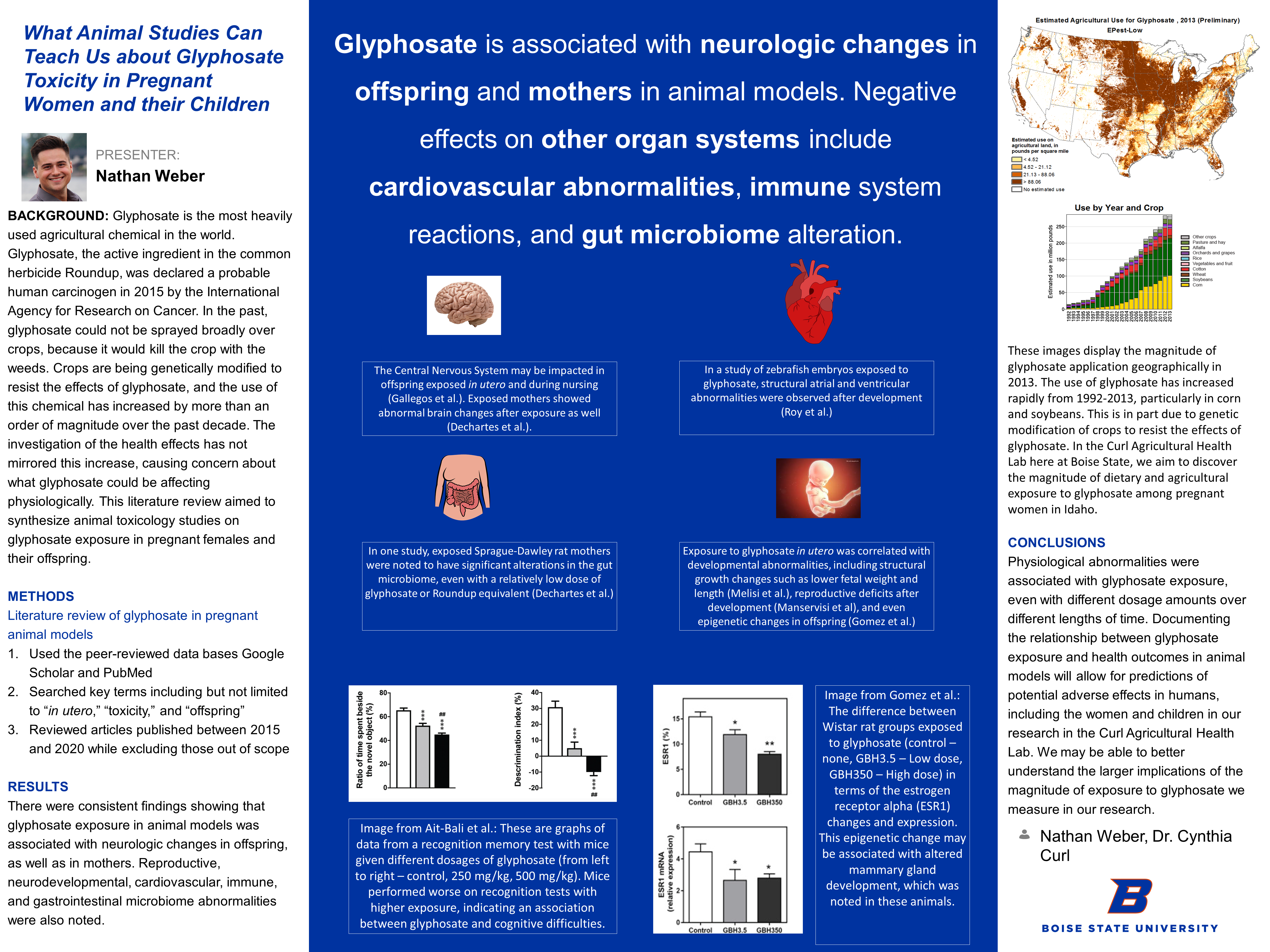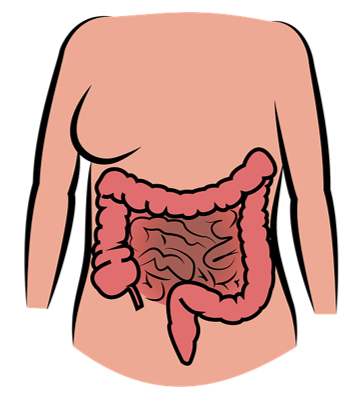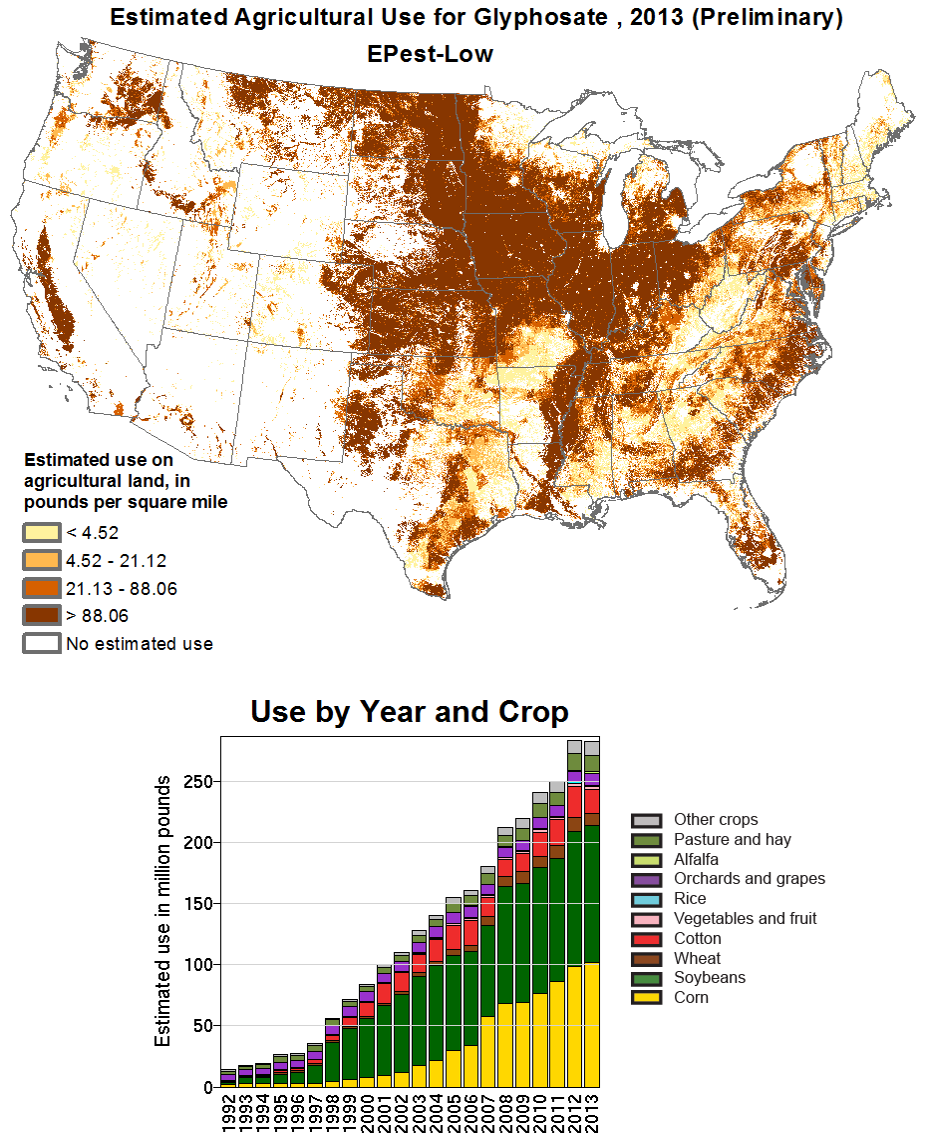Nathan M. Weber, Dr. Cynthia Curl, Meredith Spivak

Background
Glyphosate is the most heavily used agricultural chemical in the world. Glyphosate, the active ingredient in the common herbicide Roundup, was declared a probable human carcinogen in 2015 by the International Agency for Research on Cancer. In the past, glyphosate could not be sprayed broadly over crops, because it would kill the crop with the weeds. Crops are being genetically modified to resist the effects of glyphosate, and the use of this chemical has increased by more than an order of magnitude over the past decade. The investigation of the health effects has not mirrored this increase, causing concern about what glyphosate could be affecting physiologically. This literature review aimed to synthesize animal toxicology studies on glyphosate exposure in pregnant females and their offspring.
Methods
Literature review of glyphosate in pregnant animal models:
- Used the peer-reviewed data bases Google Scholar and PubMed
- Searched key terms including but not limited to “in utero,” “toxicity,” and “offspring”
- Reviewed articles published between 2015 and 2020 while excluding those out of scope
Results
There were consistent findings showing that glyphosate exposure in animal models was associated with neurologic changes in offspring, as well as in mothers. Reproductive, neurodevelopmental, cardiovascular, immune, and gastrointestinal microbiome abnormalities were also noted.
Glyphosate is associated with neurologic changes in offspring and mothers in animal models. Negative effects on other organ systems include cardiovascular abnormalities, immune system reactions, and gut microbiome alteration.

-
- The Central Nervous System may be impacted in offspring exposed in utero and during nursing (Gallegos et al.). Exposed mothers showed abnormal brain changes after exposure as well (Dechartes et al.).

-
- In a study of zebrafish embryos exposed to glyphosate, structural atrial and ventricular abnormalities were observed after development (Roy et al.)

-
- In one study, exposed Sprague-Dawley rat mothers were noted to have significant alterations in the gut microbiome, even with a relatively low dose of glyphosate or Roundup equivalent (Dechartes et al.)

- Exposure to glyphosate in utero was correlated with developmental abnormalities, including structural growth changes such as lower fetal weight and length (Melisi et al.), reproductive deficits after development (Manservisi et al), and even epigenetic changes in offspring (Gomez et al.)
These images display the magnitude of glyphosate application geographically in 2013. The use of glyphosate has increased rapidly from 1992-2013, particularly in corn and soybeans. This is in part due to genetic modification of crops to resist the effects of glyphosate. In the Curl Agricultural Health Lab here at Boise State, we aim to discover the magnitude of dietary and agricultural exposure to glyphosate among pregnant women in Idaho.

Conclusions
Physiological abnormalities were associated with glyphosate exposure, even with different dosage amounts over different lengths of time. Documenting the relationship between glyphosate exposure and health outcomes in animal models will allow for predictions of potential adverse effects in humans, including the women and children in our research in the Curl Agricultural Health Lab. We may be able to better understand the larger implications of the magnitude of exposure to glyphosate we measure in our research.
Additional Information
For questions or comments about this research, contact Nathan Weber at nathanweber@u.boisestate.edu.